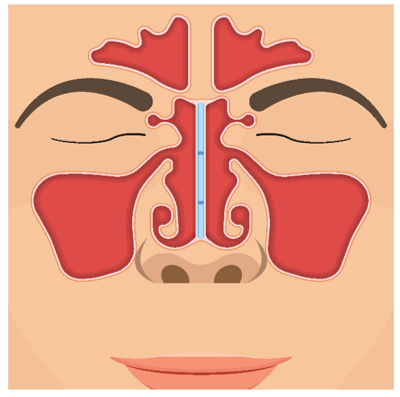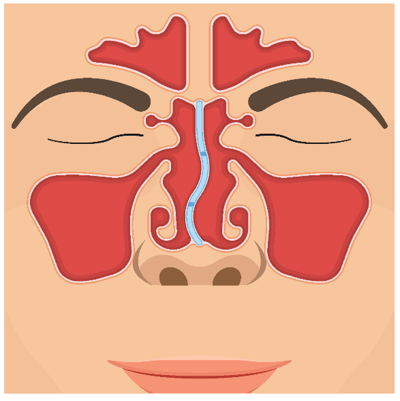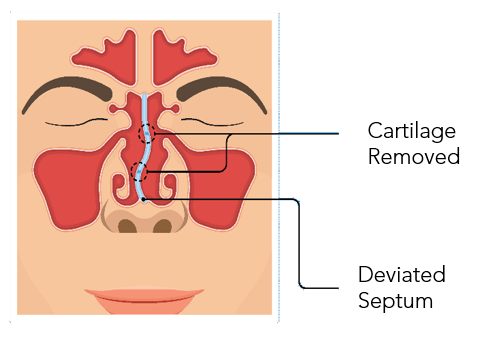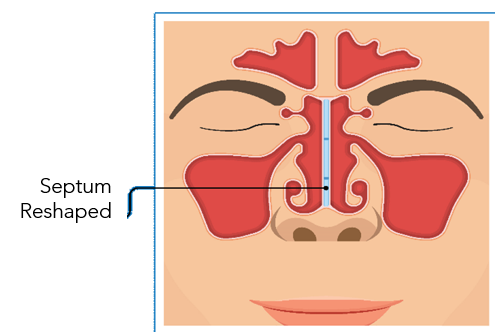What is the Nasal Septum?
The nasal septum is a bony-cartilage wall that divides the nasal cavity (nostrils) into right and left halves (Figures 1 and 2.)

Figure 1. Nasal septum

Figure 2. Deviated Nasal septum
What is Septoplasty?
Septoplasty is a surgical procedure (Fig 3 & 4) which straightens a crooked or bent nasal septum. It is performed under general anaesthesia. The operation is performed through the nose and there are no external cuts or wounds on the face. Some surgeons may perform the surgery with the aid of an endoscope.
During the operation, the following steps are done:
- A cut (incision) is made on one side of the nasal septum inside the nose. The lining of the nasal septum is carefully lifted.
- The underlying bone and cartilage which is crooked is then removed or shifted.
- The incision is stitched with an absorbable material which will dissolve on its own with time.
- A nasal splint may be inserted to keep the shifted septum in place and to prevent blood from collecting underneath the mucosa. This splint is usually removed a week later in the clinic.
A septoplasty is commonly performed together with a turbinate reduction procedure (refer to “Inferior Turbinate Reduction Surgery” pamphlet).
When Do I Need a Septoplasty?
A septoplasty is recommended in the following situations:
•Bent or crooked septum (deviated nasal septum) that has caused significant reduction in airflow through one side of the nose (Fig. 2)
•Bleeding from a blood vessel on or behind a deviated nasal septum
•To allow better access to the sinuses during sinus surgery

Figure 3. What is done during septoplasty

Figure 4. Intended result after septoplasty
What are the Risks of Septoplasty?
Septoplasty is generally a safe surgical procedure. The most common risk and complications are:
- Bleeding
- Infection
- Perforation of the septum
- Altered shape of the nose
- Hyposmia (decreased sense of smell)
- Remnant deviation of the nasal septum
To minimise the risk of bleeding and infection, it is important for patients to keep their nose clean by performing frequent nasal irrigation. Your ENT doctor will teach you how to do so.
